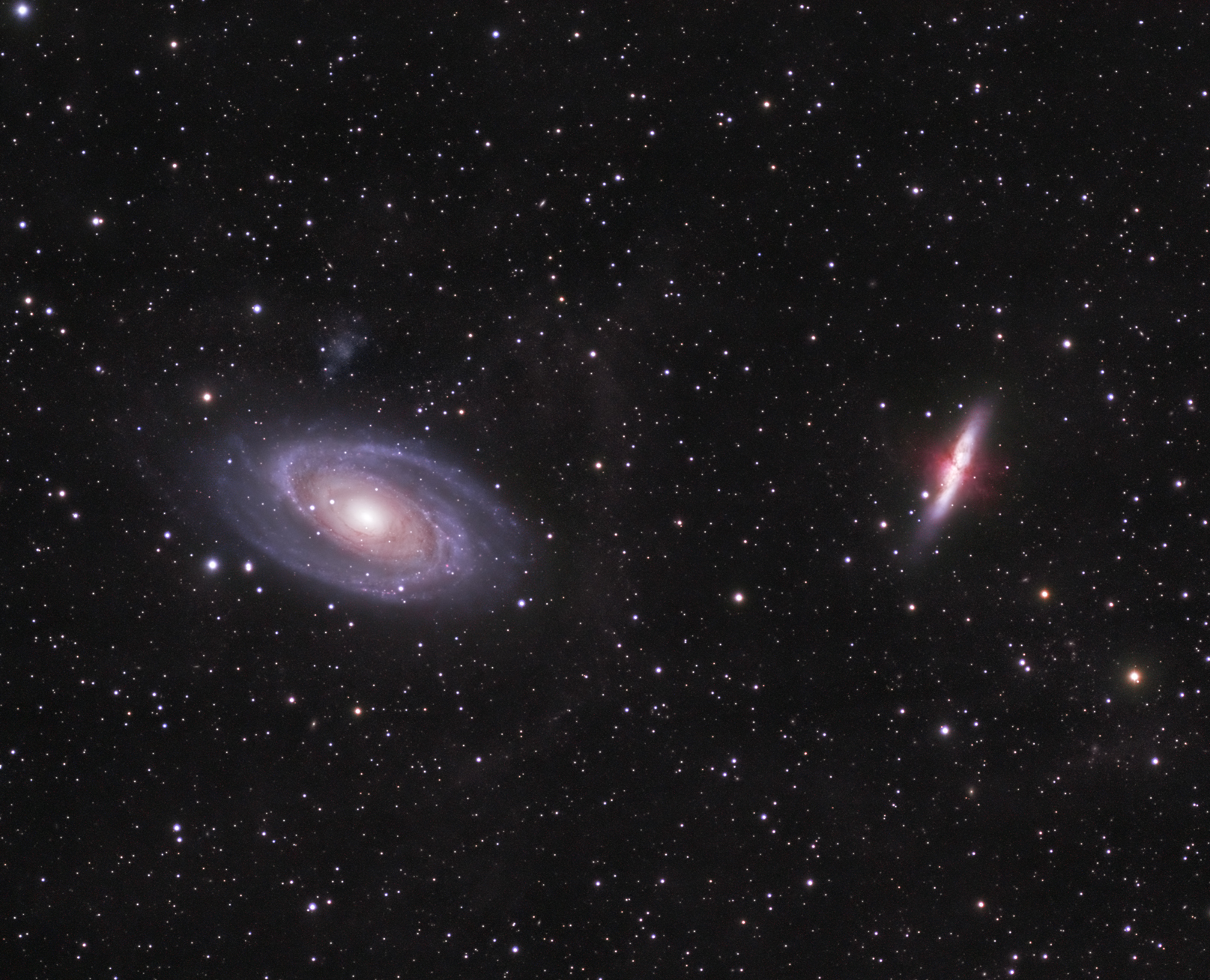M81, M82, Integrated Flux Nebula
Characteristics:
RA: 9h 55m 58s
Dec: 69 degrees 02' 43"
Position Angle: +268 degrees
Description:
M81
(the largest
galaxy on the left) is a grand-design spiral galaxy
that was discovered by Johann Bode in 1774. Due to its
relatively large size and high surface brightness, it is an easy target
for visual observation through small aperture telescopes. M81
forms a galactic pair with M82 (on the right), located only
150,000
light
years apart, and the two galaxies have influenced each other through a
close encounter occurring tens of millions of years ago. Closer
examination of
this image reveals a larger
companion galaxy located above M81, referred to as Holmberg
IX. M82 (the smaller galaxy on the
right)
is a companion to
M81 and was also discovered by Johann Bode in 1774. It has an
odd,
oblong shape that is thought to have arisen from gravitational
interaction with M81 millions of years ago. High resolution
color images of M82 show dramatic tendrils of red gas shooting from
the center of the galaxy. The
region shown in this image is located high above the galactic plane and
shows a very faint glow known
as the Integrated Flux Nebula (IFN),
due to interstellar dust that reflects light from the billions of stars
shining in the Milky Way galaxy.
Photographic Details:
Date: February 21, 22, 23, 2020
Scope: Takahashi
FSQ-106
Autoguider: ST402
Camera: SX814
Filters: Luminance,
R, G, B (Baader)
Exposures:
Total
exposure duration 23 hours
Post-processing: Captured and
calibrated in MaximDL, followed by alignment in Registar, followed by
integration, DBE, deconvolution, noise reduction, and DDP in
Pixinsight. Subsequent
processing in Photoshop CS (16 bit format).
Please
note: Graphics on this website
may not be reproduced without author permission.
Back to
Galaxies
Home


